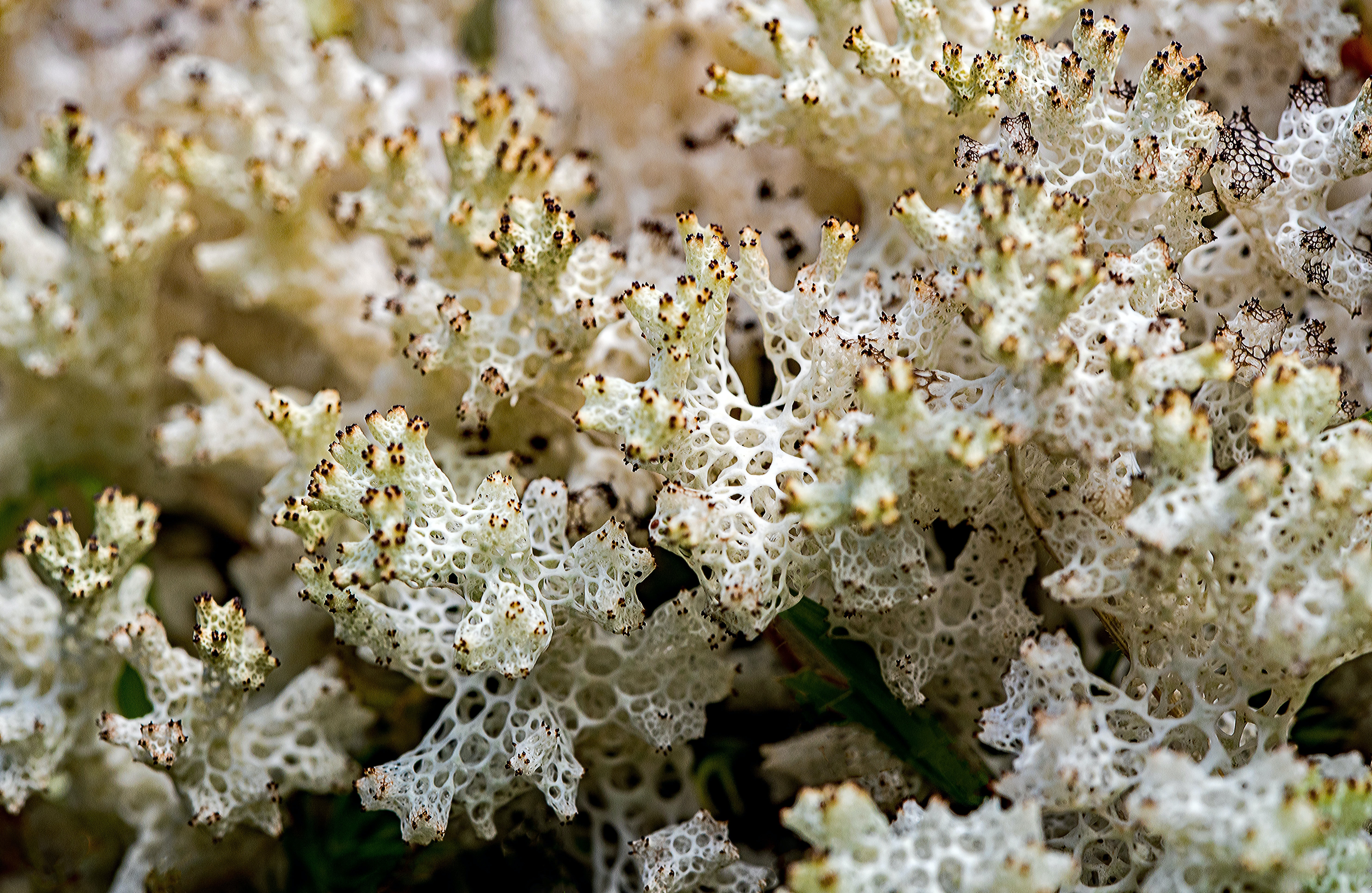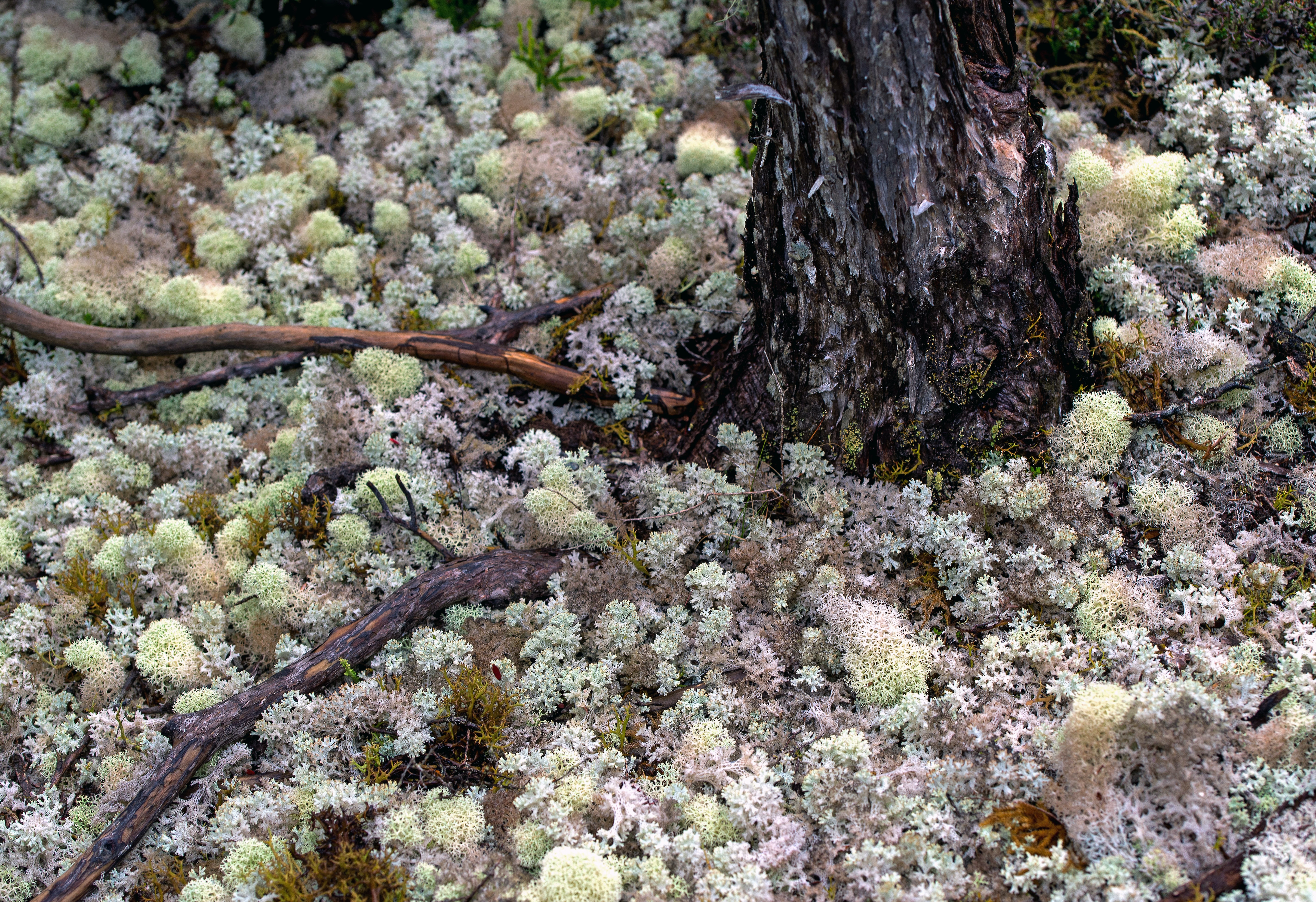Caudal Lichen
Caudal lichen is an opportunistic, lace-like lichen which can be found in Caudal D and, to a lesser extent, throughout the Distal Tesseract. While best known for its infectious, contagious nature, its role in the verdialization, and its congenital presence in every true-born verdial, the term 'Caudal lichen' can also refer to the more famous Caudal lichen symbiote's many sedentary sister species.
Basic Information
Anatomy
Like other lichens, a Caudal lichen is an organism comprised of fungal and algal elements living together in a mutualistic arrangement; whether this counts as a single multicellular organism in the strictest sense of the term is a matter of ongoing debate. All Caudal lichens, both sedentary and symbiotic, are comprised of broad, lace-like fronds anchored to a mineral or plant substrate. The fronds of a Caudal lichen are mostly white or pale-green, though the tips of the fronds take on a green color in the warm months and a yellow, orange, or red hue in the fall months; this is believed to be a primitive form of the same seasonal adaptations full-sized trees undergo to conserve resources in the cold, dark winter months. Small variations in color are useful for distinguishing between different colonies of Caudal lichens (see Genetics & Reproduction).
 Verdial leaves do not develop enervation or widespread vascularization outside of the lichen scaffold itself, making them safe to trim for comfort or aesthetic purposes. Caudal lichens found within a verdialized individual are more extensive in scope than sedentary lichens, as the fronds benefit from the warmth, safety, food storage (in the form of mammalian fat cells), and support structures of the host while providing the host with better access to glucose and certain vitamins.
Verdial leaves do not develop enervation or widespread vascularization outside of the lichen scaffold itself, making them safe to trim for comfort or aesthetic purposes. Caudal lichens found within a verdialized individual are more extensive in scope than sedentary lichens, as the fronds benefit from the warmth, safety, food storage (in the form of mammalian fat cells), and support structures of the host while providing the host with better access to glucose and certain vitamins.
When a symbiotic Caudal lichen begins to grow within a mammalian host via the verdialization process, the lichens' fronds serve as scaffolding for 'leaves' comprised of cutaneous tissues adapted by the lichen to perform photosynthesis. This is the source of the 'deciduous' look of verdialized creatures, with the verdials themselves being the most well-known of these creatures.

by David Clode
Genetics and Reproduction
Like most lichens, Caudal lichens reproduce asexually through the spread of airborne spores. Caudal lichens within a verdialized individual are less able to spread in this manner, with spores often finding themselves into the host's sweat or attached to shed skin cells. However, Caudal lichens in a mammalian host have less need of spreading in this manner as well, as verdialization is a condition which is passed vertically from mother to child and can even be passed through close physical contact (i.e. when the host mates).
Caudal lichens are capable of undergoing horizontal gene transfer when exposed to other Caudal lichens within a host organism or when in another aqueous environment. As a result, when a verdialized creature spends much of their time with another verdialized creature, the two gradually begin to take on a shared frond color. This has had a profound impact on the heavily monogamous Vale Verdial people, as constantly changing frond color out-of-season or failing to adapt to one's spouse's color makes concealing infidelity rather difficult.
Growth Rate & Stages
Sedentary Caudal lichens found in the wild usually gain their full size within a year, while symbiotic Caudal lichens within hosts take anywhere from 1-3 years to fully convert the host via verdialization. Caudal lichen symbiotes never stop growing, though excess fronds are not enervated and may be comfortably trimmed at the host's discretion (i.e. for styling).
Dietary Needs and Habits
Caudal lichens are, like other lichens, photosynthetic, though they can also derive from sustenance from the substrate on which they grow. Sedentary Caudal lichens are adept at surviving in resource scarce environments, requiring a minimum of water, sunlight, and a suitable substrate to thrive. Part of the reason that Caudal lichen symbiotes grow so fast is that they are in an ideal environment for growth within the mammalian body - especially humanoids with their limited hair cover - though the lack of light during the initial stages of growth causes these early stages to proceed more slowly than those of their sedentary counterparts.
Genetic Descendants
Conservation Status
Caudal lichens are widespread within the Caudal and Distal Tesseracts, making them unlikely to face threats to their continued existence.
Geographic Distribution
Related Ethnicities




I love that these lichen change colours with the seasons - that's a really nice touch. I like the bits about verdialisation too.
Explore Etrea | March of 31 Tales